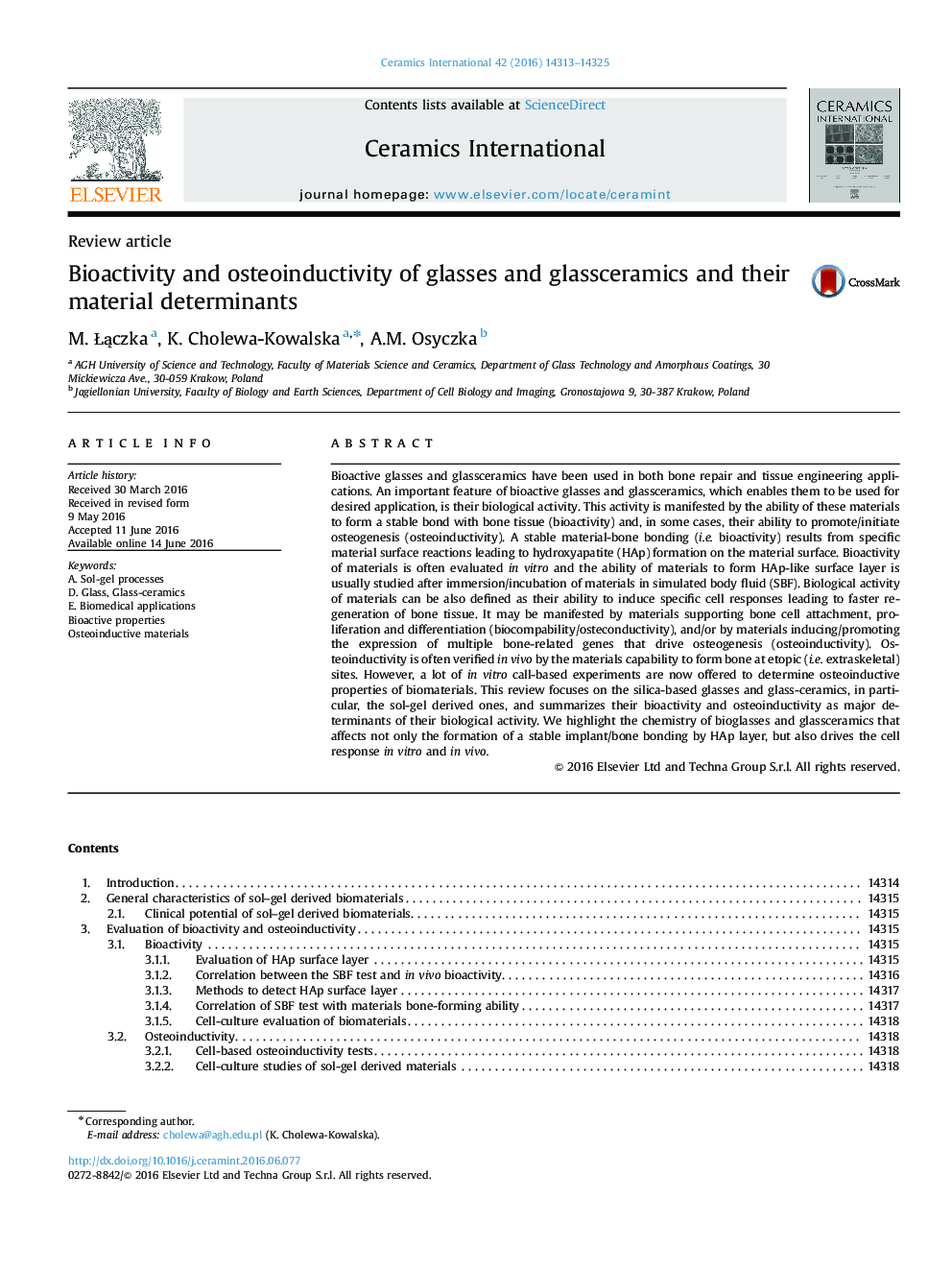| Article ID | Journal | Published Year | Pages | File Type |
|---|---|---|---|---|
| 10624023 | Ceramics International | 2016 | 13 Pages |
Abstract
Bioactive glasses and glassceramics have been used in both bone repair and tissue engineering applications. An important feature of bioactive glasses and glassceramics, which enables them to be used for desired application, is their biological activity. This activity is manifested by the ability of these materials to form a stable bond with bone tissue (bioactivity) and, in some cases, their ability to promote/initiate osteogenesis (osteoinductivity). A stable material-bone bonding (i.e. bioactivity) results from specific material surface reactions leading to hydroxyapatite (HAp) formation on the material surface. Bioactivity of materials is often evaluated in vitro and the ability of materials to form HAp-like surface layer is usually studied after immersion/incubation of materials in simulated body fluid (SBF). Biological activity of materials can be also defined as their ability to induce specific cell responses leading to faster regeneration of bone tissue. It may be manifested by materials supporting bone cell attachment, proliferation and differentiation (biocompability/osteconductivity), and/or by materials inducing/promoting the expression of multiple bone-related genes that drive osteogenesis (osteoinductivity). Osteoinductivity is often verified in vivo by the materials capability to form bone at etopic (i.e. extraskeletal) sites. However, a lot of in vitro call-based experiments are now offered to determine osteoinductive properties of biomaterials. This review focuses on the silica-based glasses and glass-ceramics, in particular, the sol-gel derived ones, and summarizes their bioactivity and osteoinductivity as major determinants of their biological activity. We highlight the chemistry of bioglasses and glassceramics that affects not only the formation of a stable implant/bone bonding by HAp layer, but also drives the cell response in vitro and in vivo.
Related Topics
Physical Sciences and Engineering
Materials Science
Ceramics and Composites
Authors
M. ÅÄ
czka, K. Cholewa-Kowalska, A.M. Osyczka,
